
Szczecin is the capital and largest city of the West Pomeranian Voivodeship in northwestern Poland. Located near the Baltic Sea and the German border, it is a major seaport and Poland's seventh-largest city. As of December 2021, the population was 395,513.
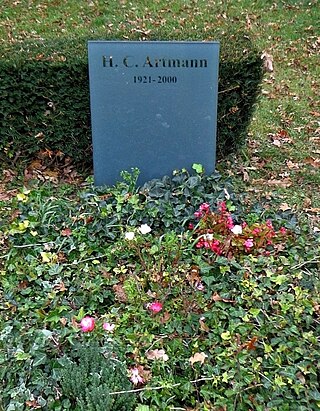
Hans Carl Artmann, also known as Ib Hansen, was an Austrian poet and writer, most popular for his early poems written in Viennese, which however, never after were to be the focus of his oeuvre.

Drang nach Osten was the name for a 19th-century German nationalist intent to expand Germany into Slavic territories of Central and Eastern Europe. In some historical discourse, Drang nach Osten combines historical German settlement in Central and Eastern Europe, medieval military expeditions such as those of the Teutonic Knights, and Germanisation policies and warfare of modern German states such as those that implemented Nazism's concept of Lebensraum.
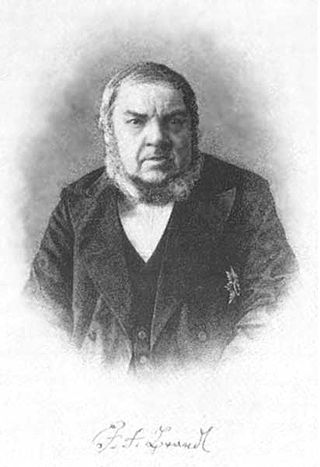
Johann Friedrich von Brandt was a German-Russian naturalist, who worked mostly in Russia.
Adriaan van Roomen, also known as Adrianus Romanus, was a mathematician, professor of medicine and medical astronomer from the Duchy of Brabant in the Habsburg Netherlands who was active throughout Central Europe in the late 16th and early 17th centuries. As a mathematician he worked in algebra, trigonometry and geometry; and on the decimal expansion of π. He solved the Problem of Apollonius using a new method that involved intersecting hyperbolas. He also wrote on the Gregorian calendar reform.

Johann Matthäus Bechstein was a German naturalist, forester, ornithologist, entomologist, and herpetologist. In Great Britain, he was known for his treatise on singing birds.
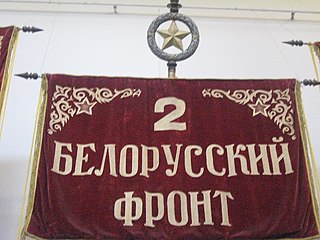
The 2nd Belorussian Front was a military formation, of Army group size, of the Soviet Army during the Second World War. Soviet army groups were known as Fronts.
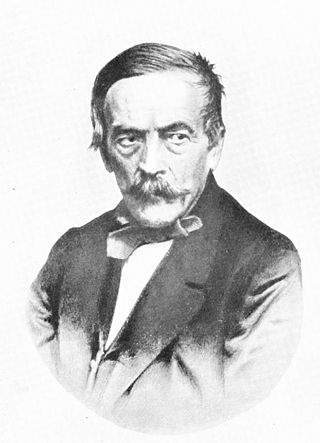
Gottlieb August Wilhelm Herrich-Schäffer was a German entomologist and physician. He was born, and died, in Regensburg. Herrich-Schäffer studied and collected particularly butterflies and moths (Lepidoptera). He was chairman of the Regensburg Botanical Society from 1861 to 1871, and was awarded an honorary citizenship of Regensburg in 1871.
Argyrophis diardii, known commonly as Diard's blind snake, the Indochinese blind snake, the large blind snake, or the large worm snake, is a species of harmless snake in the family Typhlopidae. The species is endemic to South Asia and Southeast Asia. There are two recognized subspecies.
Typhlophis is a monotypic genus created for the blind snake species, T. squamosus, found along the Atlantic coast of South America from the Guianas to Pará in Brazil, as well as in Trinidad. No subspecies are currently recognized.

Jürg Amann was a Swiss author and dramatist. He has written radio plays, a biography of Robert Walser, and other works.
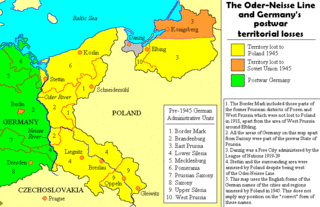
The Oder–Neisse line is the basis of most of the international border between Germany and Poland from 1990. It runs mainly along the Oder and Lusatian Neisse rivers and meets the Baltic Sea in the north, just west of the ports of Szczecin and Świnoujście.

Heimkehrer refers to the German prisoners of war and internees—Wehrmacht (Heer), Kriegsmarine, Luftwaffe, Waffen-SS, Ordnungspolizei, behind-the-lines Hiwis security and civilian personnel—of World War II who were repatriated to West Germany, East Germany and Austria after the war. Some of the late returnees were convicted war criminals who were subsequently tried in West Germany.

Gottfried Vopelius, was a German Lutheran academic and hymn-writer, mainly active in Leipzig. He was born in Herwigsdorf, now a district of Rosenbach, Oberlausitz, and died in Leipzig at the age of 70.
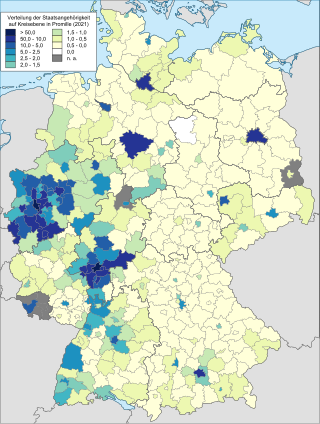
Moroccans in Germany are residents of Germany who are of Moroccan descent. According to the Federal Statistical Office of Germany, as of 2018, there are total 76,200 Moroccan citizens living in Germany without German citizenship. Of those, 505 individuals were granted asylum status.

Margarethe Carl was the stage name of Margarethe Bernbrunn, a German soprano and actress.

Xylophagus is a genus of flies in the family Xylophagidae.
Hermann Stitz was a German biologist and entomologist. He was a specialist in Hymenoptera especially ants and Neuroptera. He worked mainly on the collections of the Berlin Museum für Naturkunde der Humboldt-Universität including insects collected on the German Central Africa Expedition 1910-11 and the German-Soviet Alay-Pamir Expedition of 1928
Friedrich Gustav Schilling was a German musicologist, editor and lexicographer.













